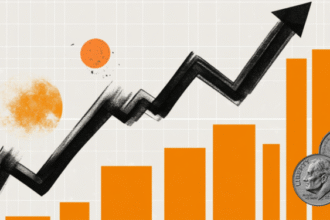What’s going on here?
The Indian rupee is on track for a potential upswing against the US dollar, bolstered by stronger Asian currencies and a drop in oil prices, promising a favorable opening around 83.93 to 83.94.
What does this mean?
The expected rise in the rupee ties to regional currency recovery and lower oil prices, with Brent crude recently down 4.6% amid ceasefire hopes in the Middle East. This is coupled with a stable dollar index around 102.50. Additionally, FTSE Russell’s inclusion of Indian sovereign bonds in its Emerging Markets Government Bond Index follows similar nods from JP Morgan and Bloomberg, showcasing India’s growing prominence in financial markets. Meanwhile, the Reserve Bank of India (RBI) is likely to maintain its policy rate but might adopt a ‘neutral’ stance, signaling a possible rate cut in December. Investors are also eyeing the Federal Reserve’s September meeting minutes for clues on rate cuts and economic risks.
Why should I care?
For markets: Currency and investment shifts at play.
The Indian rupee’s path could impact local markets and investor strategies. Its slight appreciation, amid a stable US dollar and steady oil prices, might boost confidence in Indian assets. Yet, current market indicators like the one-month non-deliverable rupee forward at 84.05 and the onshore one-month forward premium at 11.50 paise require close monitoring. Investors in Indian equities and debt should also consider recent foreign selling trends, with a net sell-off of $967.8 million in equities and $136 million in debt.
The bigger picture: Global economic pulses in focus.
India’s inclusion in key global bond indices is a major step in financial integration and could attract more foreign investment. As the RBI moves towards a neutral policy stance, international investors are anticipating policy changes that could affect global market dynamics. Meanwhile, keeping track of the Federal Reserve’s take on inflation and labor market risks is crucial for understanding broader economic trends. With Brent crude futures at $77.4 per barrel and the ten-year US Treasury note yield at 4.01%, staying informed on these indicators will help grasp the global economic pulse.





















